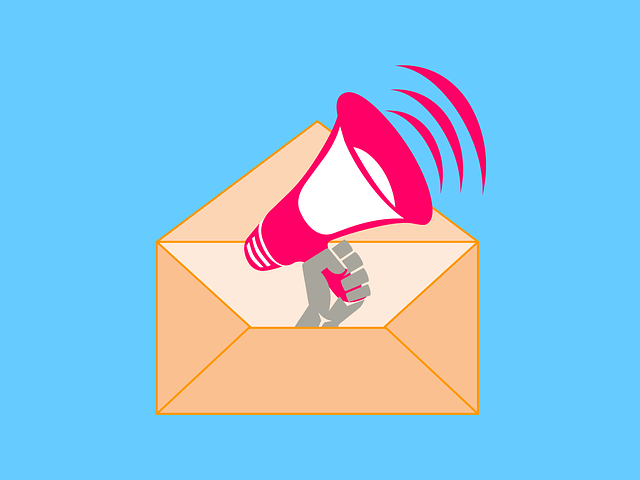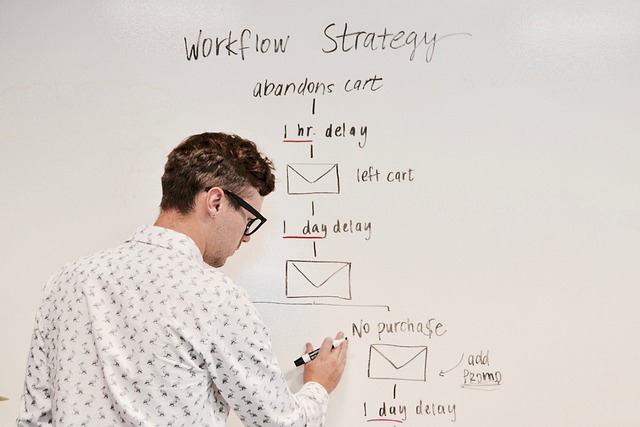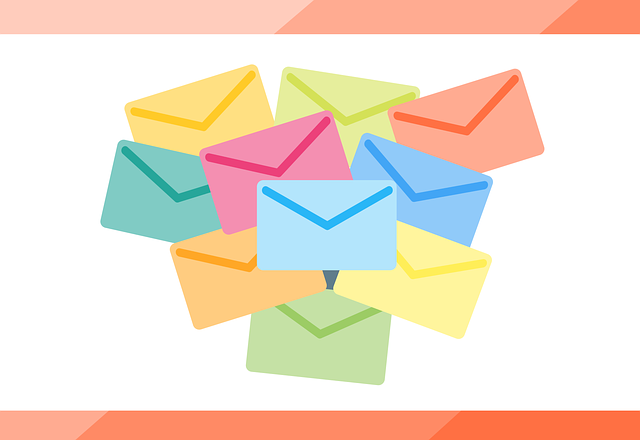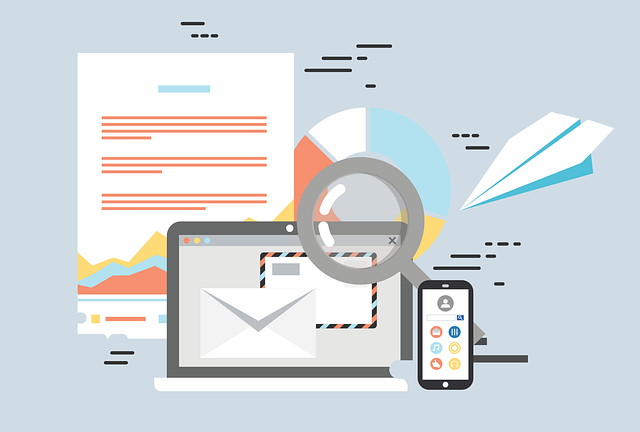In the vast landscape of healthcare and wellness, email marketing can be a guiding light, illuminating the path towards reaching and engaging your target audience. Like a beacon of hope, email campaigns have the power to deliver valuable information, foster meaningful connections, and ultimately, inspire positive change in the lives of your recipients.
This comprehensive guide is your compass, leading you through the intricacies of email marketing for healthcare and wellness. It will equip you with the knowledge and tools needed to navigate this ever-evolving landscape, empowering you to craft compelling content that resonates with your audience.
From understanding your target demographic to ensuring compliance with regulations, each step of the process is carefully laid out to maximize the impact of your email campaigns.
So, join us on this journey as we delve into the world of email marketing for healthcare and wellness. Together, we will shed light on the path to success, guiding you towards a brighter future for your organization and the individuals you serve.
Key Takeaways
- Understanding the target audience is crucial for effective engagement.
- Compelling email content focuses on engaging subject lines, personalization, and clear language.
- Segmenting the email list allows for targeted campaigns.
- Familiarize yourself with GDPR and CAN-SPAM laws for compliance with email marketing regulations.
Understanding Your Target Audience
Understanding your target audience is like peering through a keyhole into a bustling city, where you can see the unique needs and desires of each individual. To effectively engage with your healthcare and wellness email subscribers, it’s crucial to understand customer behavior and analyze market trends.
By studying their preferences, demographics, and online behavior, you can tailor your email marketing strategy to resonate with their specific interests and motivations. Understanding customer behavior allows you to anticipate their needs and provide personalized content that addresses their pain points and offers solutions.
Analyzing market trends helps you stay ahead of the curve and adapt your email campaigns to the evolving landscape. Crafting compelling email content that speaks directly to your target audience’s desires and concerns is the next crucial step in building a successful email marketing strategy.
Crafting Compelling Email Content
When crafting compelling email content, it’s essential to focus on three key points:
-
Writing engaging subject lines that grab the reader’s attention and encourage them to open the email.
-
Personalizing your emails to build a connection with your audience and increase the chances of them engaging with your content.
-
Using clear and concise language to ensure that your message is easily understood and effectively communicates the value of your email.
Write Engaging Subject Lines
Creating captivating subject lines is key to grabbing the attention of your healthcare and wellness email recipients. To ensure your emails stand out in crowded inboxes, it’s important to create subject lines that are engaging and enticing. One effective strategy is to incorporate compelling visuals in your subject lines. Visual content can be eye-catching and increase the chances of your email being opened. Additionally, testing subject line variations can help you determine which approach resonates best with your audience. Use A/B testing to compare different subject lines and analyze the open rates to optimize your email marketing campaigns. By creating visually appealing subject lines and testing their effectiveness, you can improve the engagement and success of your healthcare and wellness email campaigns. In the next section, we will explore how to personalize your emails and make them more relevant to your recipients.
Personalize Your Emails
Make your recipients feel special by tailoring your emails to their individual needs and preferences, like a perfectly tailored suit that accentuates their unique style and personality. Personalization benefits go beyond just addressing your recipients by their first name. It involves creating content that speaks directly to their interests and concerns.
Here are four ways to personalize your emails effectively:
-
Segment your audience based on demographics, interests, and past interactions. This allows you to send targeted messages that resonate with specific groups.
-
Utilize dynamic content that adapts based on the recipient’s behavior or preferences. This can include personalized product recommendations or tailored offers.
-
Use personalization tools like merge tags to insert individualized details into your emails, such as location or recent purchases.
-
Leverage automation to send personalized emails at the right time, ensuring that your messages are timely and relevant.
By personalizing your emails, you can create a stronger connection with your recipients and increase engagement. Speaking of engagement, the next section will explore how using clear and concise language can enhance your email marketing efforts.
Use Clear and Concise Language
Using clear and concise language in your emails can help you effectively convey your message and keep your recipients engaged. When crafting your email content, it’s important to be mindful of the length and clarity of your sentences.
Avoid using jargon or technical terms that might confuse your readers. Instead, opt for simple and straightforward language that’s easy to understand. Additionally, make sure to organize your thoughts in a logical manner, using bullet points or numbered lists when necessary.
By doing so, you can optimize email deliverability and ensure that your message is received and understood by your target audience.
In order to gauge the effectiveness of your email campaigns, consider using email analytics to track open rates, click-through rates, and conversions. This data can provide valuable insights into the preferences and behaviors of your recipients, allowing you to further refine your email marketing strategy.
Moving forward, let’s explore the next section about building and growing your email list.
Building and Growing Your Email List
To build and grow your email list, you need to create opt-in opportunities for your audience. This can be done by adding subscription forms on your website, blog posts, and social media channels.
Additionally, offering incentives such as exclusive content or discounts can entice people to subscribe to your emails.
Lastly, segmenting your email list based on demographics, interests, or past interactions allows you to send targeted campaigns that resonate with your subscribers and increase engagement.
By implementing these strategies, you can effectively build and nurture a valuable email list for your healthcare or wellness business.
Create Opt-In Opportunities
Incorporate opt-in opportunities into your healthcare or wellness emails to grow your subscriber list, and did you know that businesses that use email marketing experience an average ROI of $42 for every dollar spent? By implementing effective opt-in strategies and email subscription forms, you can encourage your audience to willingly provide their contact information. This allows you to build a targeted email list filled with individuals who are genuinely interested in your healthcare or wellness offerings. To evoke an emotional response in your audience, consider using a table to showcase the benefits they can receive by subscribing to your emails. Here’s an example:
| Benefit 1 | Benefit 2 | Benefit 3 |
|---|---|---|
| Improved health outcomes | Exclusive discounts | Expert advice |
| Personalized content | Access to webinars | Special promotions |
| Wellness tips and tricks | Product recommendations | Free resources |
By offering these enticing benefits, you can entice your audience to opt in and join your email list. Once you have their attention, you can move on to the next step: offering incentives for subscriptions.
Offer Incentives for Subscriptions
Now that you’ve learned about creating opt-in opportunities, it’s time to take your email marketing strategy to the next level. One effective way to entice subscribers is by offering incentives.
By providing exclusive offers and free resources, you can capture the attention of your audience and encourage them to sign up for your healthcare or wellness emails. Exclusive offers could include discounts on services or products, while free resources could be in the form of e-books, guides, or access to webinars.
These incentives not only make your subscribers feel valued but also give them a reason to stay engaged with your content. Once you have a growing list of subscribers, the next step is to segment your email list for targeted campaigns. This allows you to personalize your messages and ensure they resonate with each specific group of recipients.
Segment Your Email List for Targeted Campaigns
Maximize the effectiveness of your campaigns by organizing and categorizing your email list into specific groups. This allows you to deliver personalized messages that resonate with each individual subscriber. Segmentation benefits your email marketing strategy in several ways.
Firstly, it helps you send targeted messages to different segments of your audience, ensuring that the content is relevant and valuable to them. By tailoring your emails to specific interests or needs, you increase the chances of engagement and conversion.
Secondly, segmentation allows you to better understand your subscribers by analyzing their behavior and preferences within each segment. This valuable insight can be used to refine your marketing strategies and improve future campaigns.
By segmenting your email list, you can create more effective and personalized email campaigns that drive results. Once you have your segments in place, the next step is designing eye-catching email templates that will capture your audience’s attention and drive them to take action.
Designing Eye-Catching Email Templates
Enhance the visual appeal of your email templates by utilizing captivating design elements that will captivate your audience in the healthcare and wellness industry.
To evoke emotion and grab attention, consider incorporating the following eye-catching design elements into your email templates:
-
Vibrant colors: Use bold and vibrant colors that align with your brand and evoke positive emotions in your audience.
-
Compelling imagery: Include high-quality images that resonate with your target audience and visually represent your healthcare or wellness offerings.
-
Clear and concise layout: Organize your content in a clean and easy-to-read format with clear headings, bullet points, and ample white space.
-
Responsive design: Ensure your email templates are optimized for different devices and screen sizes, allowing your audience to easily engage with your content.
By implementing these design elements, you’ll create visually appealing email templates that effectively communicate your message.
Transitioning to the next section, let’s explore how to implement these templates in effective email campaigns.
Implementing Effective Email Campaigns
Little did they know, their email campaigns were about to take a turn for the better as they delved into the art of captivating their audience through cleverly crafted content.
One key aspect of implementing effective email campaigns is timing. Sending emails at the right time can significantly impact open rates and click-through rates. Research shows that emails sent on Tuesdays and Thursdays between 10 am and 12 pm tend to perform the best. However, it’s essential to consider your specific target audience’s preferences and behavior to determine the optimal timing.
Another crucial factor in measuring email campaign success is analyzing key metrics such as open rates, click-through rates, conversion rates, and unsubscribe rates. These metrics provide insights into the effectiveness of your campaigns and help you identify areas for improvement.
By mastering effective email timing and measuring campaign success, you can refine your strategies and achieve better results.
Now, let’s explore how to ensure compliance with email marketing regulations.
Ensuring Compliance with Email Marketing Regulations
To ensure compliance with email marketing regulations, it’s crucial to familiarize yourself with GDPR and CAN-SPAM laws. These regulations outline the requirements for collecting and processing personal data, as well as the rules for sending commercial emails.
Obtaining proper consent from recipients is essential. You should clearly explain how their data will be used and provide them with an easy way to unsubscribe from future emails.
Familiarize Yourself with GDPR and CAN-SPAM Laws
It’s important to familiarize yourself with GDPR and CAN-SPAM laws when engaging in email marketing for healthcare and wellness. These regulations are crucial for ensuring compliance and protecting the privacy and consent of your recipients.
Here are some key points to consider:
-
GDPR (General Data Protection Regulation) is a European Union law that governs the handling of personal data. It requires explicit consent from individuals before sending them marketing emails.
-
CAN-SPAM (Controlling the Assault of Non-Solicited Pornography and Marketing) Act is a United States law that sets guidelines for commercial email messages. It mandates clear identification, opt-out options, and accurate subject lines.
-
Failure to comply with GDPR and CAN-SPAM laws can result in severe penalties, including fines and reputational damage.
-
Best practices for email marketing compliance include obtaining explicit consent, maintaining accurate and up-to-date contact lists, providing clear unsubscribe options, and respecting recipients’ preferences.
Ensuring compliance with these regulations is just the first step in successful email marketing. Next, let’s delve into how to obtain proper consent for sending emails.
Obtain Proper Consent for Sending Emails
Ensure that you captivate your audience by obtaining their enthusiastic consent for sending emails, painting a vivid picture of the valuable content and resources they’ll receive.
Email consent strategies play a crucial role in building trust and maintaining compliance with GDPR and CAN-SPAM laws. Permission marketing is not only a legal requirement, but also an effective way to nurture relationships with your audience.
Implementing opt-in forms on your website and clearly communicating the benefits of subscribing will encourage users to willingly share their contact information. Offering exclusive content, personalized recommendations, and timely updates can further incentivize them to grant consent.
By focusing on permission-based marketing, you establish a foundation of trust and respect, leading to better engagement and higher conversion rates.
Moving forward, it’s important to provide clear unsubscribe options, allowing recipients to easily opt out of future communications.
Provide Clear Unsubscribe Options
Now that you’ve obtained proper consent for sending emails, it’s crucial to provide clear unsubscribe options to your recipients. By doing so, you not only comply with email marketing regulations, but you also enhance your email deliverability.
Clear unsubscribe options allow your subscribers to easily opt out of receiving further emails from your healthcare or wellness organization, which helps to maintain a positive relationship with them. To ensure your unsubscribe options are effective, consider the following:
-
Make the unsubscribe link prominent and easy to locate within your email.
-
Provide a clear and concise message explaining how to unsubscribe.
-
Offer alternative communication channels for those who wish to stay connected.
-
Regularly monitor and update your unsubscribe process to ensure it’s functioning properly.
By implementing these clear unsubscribe options, you demonstrate respect for your subscribers’ preferences and improve the overall deliverability of your email campaigns.
Frequently Asked Questions
How can I measure the success of my email marketing campaigns in the healthcare and wellness industry?
To measure the success of your email marketing campaigns in the healthcare and wellness industry, it’s important to track metrics and measure ROI.
Start by analyzing key performance indicators (KPIs) such as open rates, click-through rates, and conversion rates. Use email marketing software that provides detailed analytics to monitor these metrics.
Additionally, track the revenue generated from your campaigns and compare it to the cost of your email marketing efforts to calculate your return on investment (ROI).
What are some effective strategies for re-engaging inactive subscribers in my healthcare email list?
To re-engage inactive subscribers in your healthcare email list, employ reactive engagement strategies that act as your secret weapon.
Think of it as a treasure hunt where you guide your subscribers back to the valuable information you provide.
Implement win back campaigns, offering exclusive content, personalized incentives, or special discounts.
By tailoring your approach and reminding them of the value you offer, you can reignite their interest and boost engagement levels.
Are there any specific email marketing best practices that healthcare and wellness practitioners should follow?
To ensure compliance with email marketing regulations and improve email deliverability, healthcare and wellness practitioners should follow certain best practices.
First, obtain explicit consent from subscribers before sending emails.
Additionally, provide clear opt-out instructions and honor unsubscribe requests promptly.
Use a reputable email service provider that adheres to industry standards.
Regularly monitor and update your email list to maintain its quality and relevance.
Finally, craft compelling subject lines, personalize content, and test your emails for optimal performance.
How can I personalize my email content to better resonate with my target audience in the healthcare and wellness industry?
To personalize your email content for the healthcare and wellness industry, use personalization techniques and email personalization tools.
Start by segmenting your audience based on their healthcare needs and interests. Then, tailor your email content to address their specific concerns and offer relevant solutions.
Incorporate their names in the subject line and body of the email to make it more personal. Use dynamic content to deliver personalized recommendations and offers based on their past interactions.
What are some effective ways to segment my email list for better targeting and engagement in the healthcare and wellness field?
To effectively segment your email list in the healthcare and wellness field, consider using behavioral targeting and demographic segmentation.
By analyzing your subscribers’ past actions and preferences, you can send personalized content that resonates with their specific needs and interests.
For instance, studies show that behavioral targeting can increase click-through rates by up to 300%.
Demographic segmentation allows you to tailor your messages based on factors like age, location, and gender, further enhancing engagement and driving conversions.
Conclusion
In conclusion, email marketing is an indispensable tool for healthcare and wellness professionals to connect with their target audience.
By understanding your audience’s needs and preferences, crafting compelling content, and building a robust email list, you can effectively engage and nurture your subscribers.
Just like a well-tuned instrument, your email campaigns should resonate with your audience, capturing their attention and inspiring them to take action.
Remember, compliance with email marketing regulations is crucial, like following a roadmap to ensure a smooth journey.
So, start implementing these strategies and watch your healthcare and wellness business thrive like a blooming garden.









